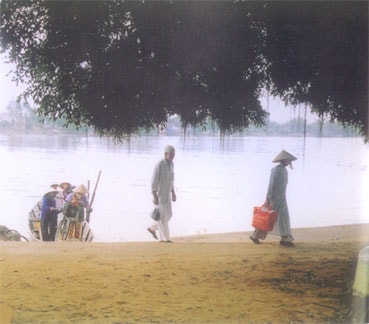Missing the hometown wharf
 |
At dusk, the women who went to the fields returned to the village. This was the time for women and girls; no men went to the water wharf at that time. The women, with flags on their backs and small bamboo baskets on their hips, took turns from the fields, rice fields, and roads to the village. No matter which way they went, they all passed the water wharf. They let their hair down to cool down, and while chatting about their work, they took off their belts, took off their shirts, and turned their skirts to shake off the forest dust, then slowly sat down, rolled up their skirts over their heads, and took turns immersing their shoulders and whole bodies in the cool water... The village law was not written, but it was very strict, everyone voluntarily complied, and very few people dared to violate it: If someone dared to spy on the women and girls bathing in the ta lin and was discovered, they would often be severely punished and be infamous for the rest of their lives...!
The water wharf is as closely associated with the highland villages as the fields, terraced fields and stilt houses. However, today in many villages and regions, the presence of the evil spirit is no longer present, because of environmental pollution from the indiscriminate exploitation of tin ore, combined with the free exploitation of upstream forests... which has led to the consequence of water depletion. Many highland villages today have to rely on national clean water programs and sponsorship programs from other international organizations to have the conditions to build water tanks, and steel pipes to bring water from the high mountains, so that the whole village can have clean water for daily life... But there is only enough water to serve mainly for eating and drinking, how can there be an evil spirit like before!?
Thai Tam -BNA






